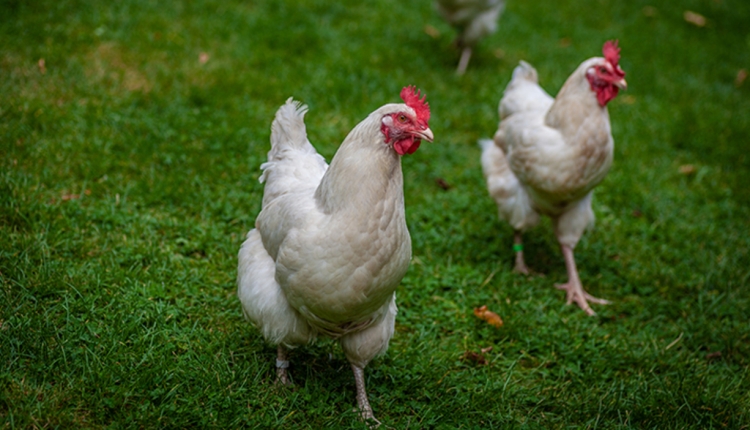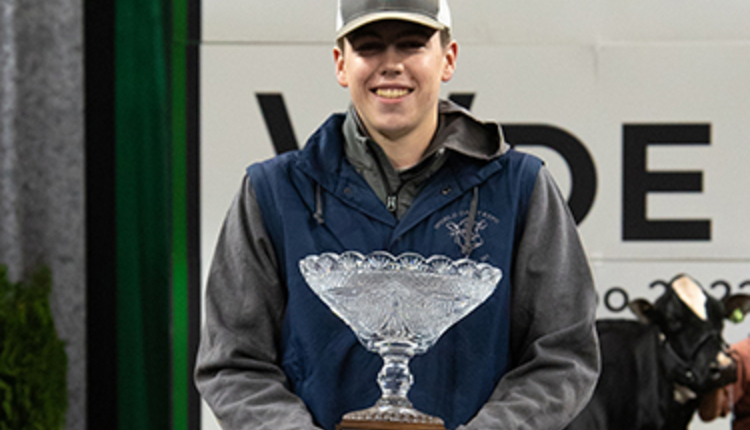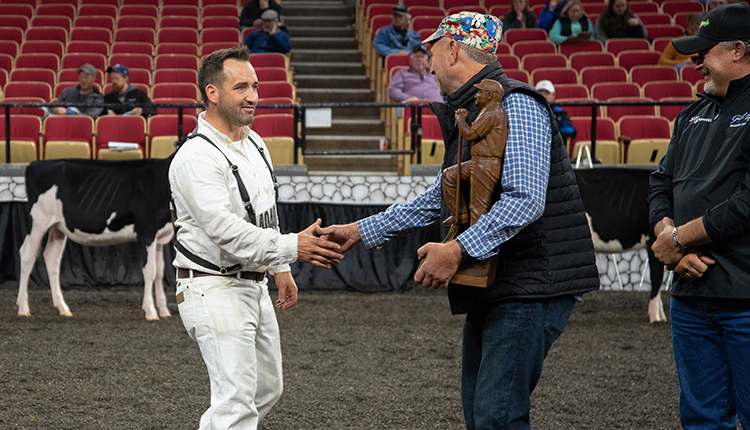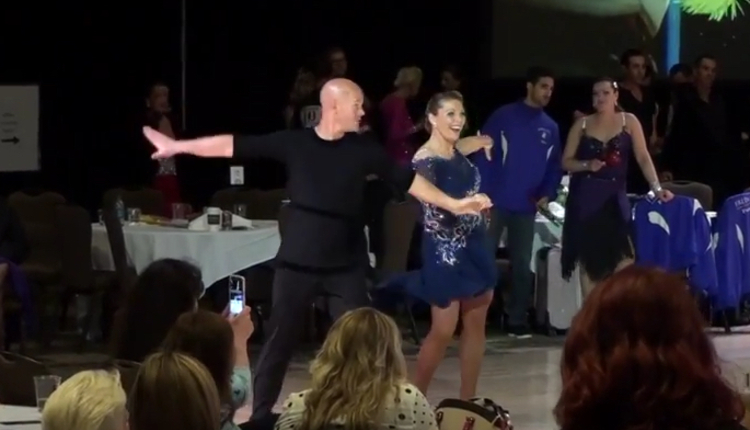
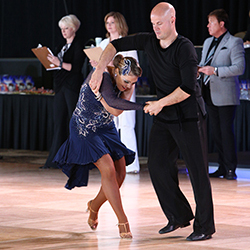 As the competition began, door guards checked back tags, known in the dance world as competitor numbers, and made final calls for late entries. Tardiness was rarely accepted as 8,057 entries crossed the dance floor over the five days.
As the competition began, door guards checked back tags, known in the dance world as competitor numbers, and made final calls for late entries. Tardiness was rarely accepted as 8,057 entries crossed the dance floor over the five days. "Heat 460. This is the Intermediate Silver Open Rumba. Contestants to the floor. This is the Intermediate Silver Open Rumba. Music please," boomed the announcer's voice, as members of the audience gazed towards the dance stage or flipped through their 200-plus page dance catalog.
It was show time for us.
Music starts.
Dancers begin.

Seven judges, all with clipboards, lined the floor observing a variety of skills instantly. Just like dairy cattle competitions, there is a scorecard. And just like dairy cattle judging competitions, most of the judges have been to the top of the competition mountain and have forgotten more than I will ever learn on the topic of dance.
A dance judge's list is long, just like the Purebred Dairy Cattle Judging Scorecard.
Starting on time, staying musically on beat, and dancing together in a partnership? If not, it's instant participation ribbon time.
How are the posture, foot and leg action, arm styling, hand gestures shape, lead, and follow? That would be like the scoring out frame, feet and legs, and rump on the dairy judging scorecard.
What about partnership, floor craft, poise, style, and grace? In the bovine circles, this would be dairy character and breed confirmation.
These assessments take place in blinks of the eye as judges pan across 5 to 12 dance couples over the course of 90 to 120 seconds. Never knowing when a judge may be looking at you, you must be on your A-game at all times. If you all down or miss a step, just get on beat. And there is no time for that "stink face" when something goes wrong. Yours truly was quite capable of that, but Miss Catey, our dance instructor, wiped that off my general appearance with constant reminders in practice.
As the competition ensued, my wife, Krista Knigge, and I made our way across the dance floor on 23 occasions.
In some portions, contestants received proficiency scores. Think classification day with scores in the 90s being the top end. In heat 25, Proficiency Bronze Eastern Swing, Krista danced her way to a 98 – the high score for the entire day. That happened to be one of the few paired dances where Krista danced with coach Vadim. With a slightly better lead, Krista shined like a committee cow on classification day as only one 98 was handed out all day along with just three 97 scores.
Once proficiency evaluations were done, it was time to line them up from first to last, just like at dairy cattle shows.
The crescendo for Krista and I was our 22nd heat. Just like the climax of the dairy show, our 22nd heat officially was called heat 547 American Rhythm Bronze Closed Championship . . . Cha Cha, Rumba, and East Coast Swing danced consecutively with no breaks. For the American Rhythm Section, it was like the final pull for Grand Champion with the best dancers on the floor for the final selection.
And so it began. We were on an adrenaline high. We balanced that with our years of practice.
After the final tabulation from the judges, we earned Champion Honors in the American Rhythm Bronze Closed Championship. For Krista and I, this win would be likened to a small dairy farm breeder bringing his best cow to the show and winning it all on one of the greatest dance stages for U.S. competitors. We were quite thrilled.

Just like showmanship competitions, it's not like Krista and I are destined to become professional dancers. However, the skills we have learned on this stage have made me a better communicator both when speaking and writing.
From the public speaking perspective, I have learned that posture and body styling speaks greater volumes than from my mouth. From the written word, organization and direct communication not only works on the dance floor but in articles, too. And ultimately, dance skills have stretched me as a person and made me a better lifelong learner. It's also improved my relationship with my wife, as our dance lessons have become our date night.
 The author is the managing editor, and he brings 19 years of industry leadership to our readers overseeing all editorial content and production of the magazine. His degree from the University of Wisconsin-Madison combined dairy science and agricultural economics.
The author is the managing editor, and he brings 19 years of industry leadership to our readers overseeing all editorial content and production of the magazine. His degree from the University of Wisconsin-Madison combined dairy science and agricultural economics.






